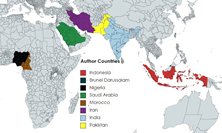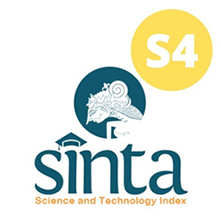Analysis Of Early Warning System In Cold Room Vaccine Storage With Iot System
Abstract
Cold room as a cold room for vaccine storage is an environment with a controlled temperature used to maintain and distribute vaccines in optimal conditions. To maintain the vaccine, it is necessary to pay attention to routine temperature monitoring, temperature data management, and prevention of situations that endanger the vaccine. The results of this review are expected to be a reference for researchers and readers with the development of research using the DS B1820 temperature sensor which will analyze the results of the data logger output and linearity at sensitive locations Cold Room with LCD output and equipped with an IoT system web display on a PC for monitoring and alarm. and notification via telegram when there is a change in temperature approaching and outside the range of 2 - 8 ° C so that this can make it easier for officers to monitor the temperature and quality of the vaccine. In the results of the study, temperature graphs and temperature data can be displayed which are recorded in minutes. Temperature measurement with standard tools produces the largest difference of 0.83. The lowest temperature was 2.06℃ and the highest temperature was 8.31℃ as well as telegram notification of early warning (2.58℃), evacuation vaccine (2.31℃), and exposed vaccine (8.6℃).

This work is licensed under a Creative Commons Attribution-ShareAlike 4.0 International License.
Authors who publish with this journal agree to the following terms:
- Authors retain copyright and grant the journal right of first publication with the work simultaneously licensed under a Creative Commons Attribution License that allows others to share the work with an acknowledgement of the work's authorship and initial publication in this journal.
- Authors are able to enter into separate, additional contractual arrangements for the non-exclusive distribution of the journal's published version of the work (e.g., post it to an institutional repository or publish it in a book), with an acknowledgement of its initial publication in this journal.
- Authors are permitted and encouraged to post their work online (e.g., in institutional repositories or on their website) prior to and during the submission process, as it can lead to productive exchanges, as well as earlier and greater citation of published work (See The Effect of Open Access).











